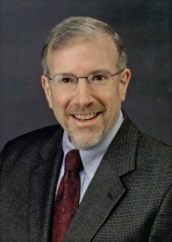
Robert A. Wynbrandt
Robert A. Wynbrandt, Executive Director & General Counsel
Keith J. Bura, Director of Finance & Administration
STS News, Summer 2016 -- With this edition of STS News, we return to an old favorite: the guest column by a member of our management team who shares insights with the membership about his or her area of expertise and operational activity. In the installment below, Keith Bura, our Director of Finance and Administration, discusses our annual budgeting process that consumes members of our staff for much of the summer. Keith joined the STS management team in February of 2015, after having served in senior finance capacities at the American College of Surgeons, the Academy of General Dentistry, and the Association Forum of Chicagoland.
Summer is here in full force, and so is budget season at STS. Although budgeting probably is not a favorite task for most, it is critically important to the Society’s operational and financial success. One key ingredient to this success is participation by both staff and surgeon leaders.
The first step in the budget process is for staff to build a bottom up (zero-based) budget that reflects the organization’s operational and strategic initiatives. One major operational initiative that will be reflected in the 2017 budget relates to an anticipated lease renewal or relocation of STS Headquarters in Chicago. The current lease with the American College of Surgeons expires on April 30, 2018.
To help with this initiative, the Society has retained CBRE Group, Inc., the largest commercial real estate service firm in the world. In addition, an architect will be selected to assist and advise the Society on space planning options.
As detailed in the Spring 2016 issue of STS News, the Society has a new strategic plan that includes three broad-based strategic initiatives: database optimization, education, and global activities. Earlier this year, senior staff outlined milestones for each initiative to be completed over the next 2 to 3 years and provided estimated costs; these milestones were presented to the Board by Associate Executive Director Bill Seward in May. Milestones that have major budget implications for 2017 include:
- Database enhancements that will allow for continuous data harvests, web-based reporting dashboards, and expanded integration;
- A comprehensive e-textbook for adult cardiac and congenital heart surgery; and
- Collaborative educational programs in Asia, Central America, and/or South America.
In addition to the operational and strategic initiatives outlined above, the budget needs to reflect the ongoing activities of the Society. With a zero-based budgeting approach, every detail and every dollar has to be provided and justified.
Once individual department budgets are drafted, senior management performs a comprehensive review to validate assumptions, confirm to the extent possible that all figures are realistic, and analyze the bottom line results. Based on this review, the proposed budget is further adjusted so that operating income is breakeven or better.
During this whole process, staff members communicate with their respective council, workforce, and task force chairs regarding projects and budget assumptions. Surgeon leaders also are consulted after changes from senior management are incorporated.
The next step in the process is a Finance Committee meeting that involves the review and discussion of detailed narratives highlighting major budget assumptions, explanations about all major favorable and unfavorable revenue and expense variances from the prior year’s projection, and comprehensive financial statements that include historical comparisons. Based on this meeting, the Committee adjusts the proposed budget as appropriate and makes a recommendation to the Board of Directors.
These funds are for initiatives aimed at giving back to the specialty, such as contributions to The Thoracic Surgery Foundation.
Included in the proposed budget are funds for the Spending Policy. These funds are for initiatives aimed at giving back to the specialty, such as contributions to The Thoracic Surgery Foundation. The Spending Policy calls for an annual allocation of approximately 2% of the Society’s investment portfolio, as measured at the close of business on June 30 of year preceding the budget year. Since the adoption of this policy in 2013, more than $1.2 million has been spent by STS to support various CT surgery initiatives, with another $748,000 allocated for 2016, a significant portion of which already has been spent or committed by the Board.
The final step in the process is for the Board to review detailed financial documents and approve the budget at its fall meeting. At the meeting, the Finance Committee Chair—currently STS Past President Doug Wood—provides an overview of the budget and answers questions before Board members vote.
Although these activities may be invisible to most STS members, the process is rigorous and lasts nearly as long as the Major League Baseball season. (I was told that it’s mandatory to make at least one sports reference in this article.)
Unfortunately for me, as a native Chicago South Sider and diehard White Sox fan, what started out as an extremely promising spring quickly turned into a disappointing summer. And, to make matters even worse for me and fellow White Sox fans who often have deeply contemptuous feelings about Chicago’s other baseball team, it looks like the Cubs remain the frontrunners to win the World Series.
At least I have the budget process to keep me occupied.